 Fujifilm Finepix X100 Hands-on
Fujifilm Finepix X100 Hands-on
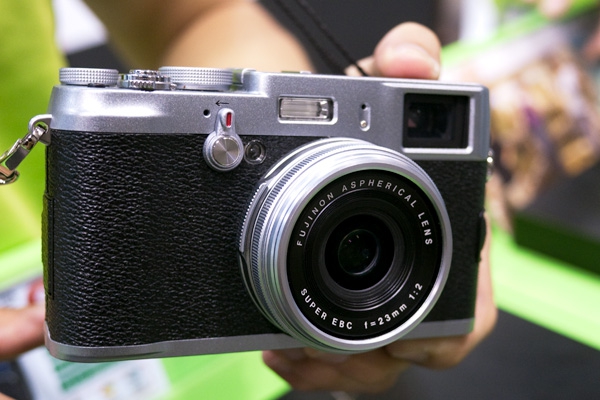
IntroductionThe Fujifilm Finepix X100 has generated a lot of hype and interest ever since it was first announced at Photokina 2010. In case you missed the hype, the X100 is a retro-styled camera featuring direct controls via knobs for aperture, shutter and exposure compensation. Its main claim to fame is its hybrid viewfinder: Based on a standard rangefinder, which in simplest terms has two viewfinders to focus, one viewfinder is replaced with an EVF which can either be used on its own, or project an overlay over the remaining optical viewfinder. Other highlights include a fine Fujinon 23mm f/2 lens (equivalent to 35mm), and Fuji's latest 12 megapixel APS-C CMOS sensor. Recently the camera just went on sale in Singapore, and it was launched at the IT Show 2011. I was there, and managed to spend some time with it. What do I think? Read on!
InterfaceFujifilm has been praised for putting out a camera that uses direct manual controls, and it certainly is a good idea. The aperture ring around the lens, the large shutter knob near the centre at the top of the camera, and the smaller exposure compensation knob at the top corner of the camera makes exposure settings easy to manipulate. This is especially so if you are coming from a compact camera or a lower-end DSLR with just one command dial. Change the aperture? Turn this dial. Change shutter speeds? Twist the shutter speed knob. One problem though, is that the aperture and shutter controls turn in full stops. No setting the aperture to f/4.8, for instance. It works quite nicely, and in many ways reminds me of a 1970's fixed lens rangefinder. Until I decided to change the ISO setting, which after all, is an advantage of modern digital cameras. That was the moment the retro-feel ended. I realised there was no ISO knob, unlike say, the Canon Powershot G12. Instead, the customisable Fn. button to the right of the shutter release is, by default, used to engage ISO changes (and also the only way without going into the menu system). To do so, the button is held down, and either the small rocker on the back of the camera or the jog dial around the directional pad is used to make changes. In practice, this would not be bad (other than removing some of the retro feel), but I felt the tiny rocker and jog dial were poor to use. In particular, the jog dial is one of the worst I have ever used: The lightest touch would set it off, and Fujifilm decided that not having click stops or detents on the jog dial would be a good idea. There are settings like the white balance and internal flash control that requires the directional pad, and too often attempting to press on them results in me moving the jog dial and inadvertently select the wrong setting. This was especially annoying when trying to change white balance. The light touch also meant that I had to be careful when lifting my finger off the jog dial. After struggling with the jog dial, I realised that I was back to dealing with the complexity inherent in a digital camera. Make no mistake, despite the camera's "vintage-inspired" design, this is still very much a modern digital camera. Once out of exposure settings, using it is like any other digital camera. Menus are there to customise certain parts of the automation, white balance and ISO settings still need button pressing and jog dial turning. In essence, it felt like a camera of two halves: traditional settings (exposure and manual focus) uses tradition controls, while modern settings (AF, AE, White Balance etc) uses modern controls. All-in-all, Fujifilm could have done a better job in integrating the two halves. ViewfinderIn a word: Brilliant. The optical viewfinder is bright and clear, while the electronic viewfinder on its own is a match for my Panasonic GH1, which is saying something. Combined, the EVF provides information in a way no optical viewfinder can do. At the more advanced setting, the EVF overlay can display the built-in level, a distance scale for focus distance, a live histogram, and grid lines. All very nicely laid out. When the shutter release button is half-pressed, a frame will show which part of the scene will be captured. This is important as rangefinders have parallax error; the closer you are to the subject the greater it is. Switching between the electronic and optical viewfinder is easy, and done via a spring-lever on the front of the camera. FocusingAutofocus works very well. Focus is as fast (or maybe faster) than the Panasonic Micro Four Thirds cameras, and even on dimly light surfaces with low contrast, the camera was still able to focus without much issue. AF modes are limited to a single point, moveable by holding the AF button and using the directional pad. Manual focus, while being electronically-controlled, was easy to use. In EVF and LCD mode, the point of focus can be magnified, and is selected in the same way as the autofocus point. The manual focus ring around the lens is beautifully dampened. OthersI was disappointed with the shutter release button. Instead of using a more professional soft touch release, the X100 uses the more consumer click-type; there is a click when engaging a full-press of the shutter. Not the best for stability. I suspect accessories like Tom Abrahamsson's MiniSoftRelease is going to see an increase in sales once enough X100s are sold. On the shutter itself: The X100 utilises a leaf shutter, not a focal plane shutter. I made this pleasant discovery while trying to snap a photo. Initially I thought something was wrong. In fact, I already had taken the photo! The lack of noise is a good thing to have, and the ability to sync with flashes at any speed is another plus. One thing about the X100 is its weight. The use of magnesium alloys instead of the traditional aluminium bodies and brass plates makes it feel a lot lighter than it should be. I expected it to feel like a lump of solid metal, as with older film cameras, but it really feels more like a modern premium compact.
SamplesI am sure most will be interested in some samples, but the show floor of a public exhibition is generally a poor place for samples. Still, here are a few crops at different ISOs. These were all shot at fine JPEG, using the camera's default image settings, and with no corrections other than cropping. I have the corresponding RAW files, however the lack of a proper RAW converter means I feel it is best to not post them up. Apologies for the out of focus ISO 1600 shot. 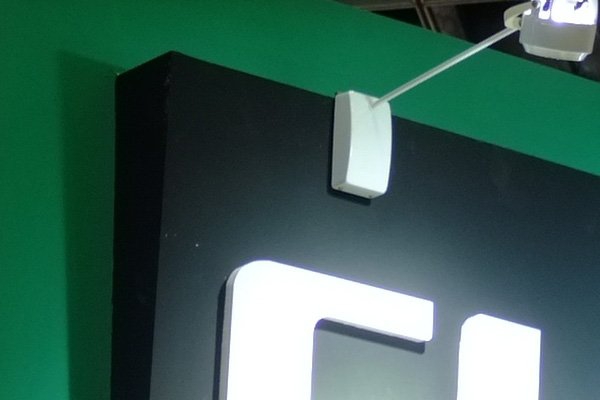
ISO 200 - Click on image for larger crop 
ISO 400 - Click on image for larger crop 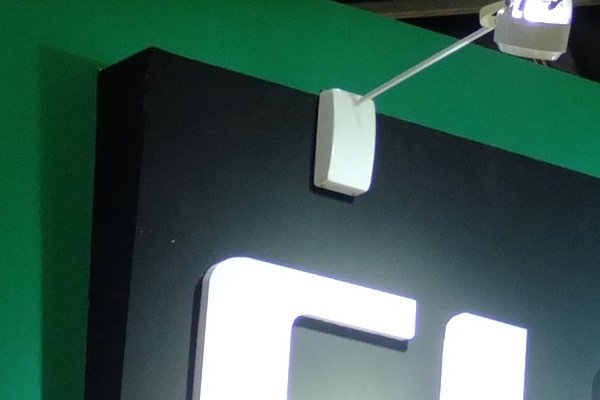
ISO 800 - Click on image for larger crop 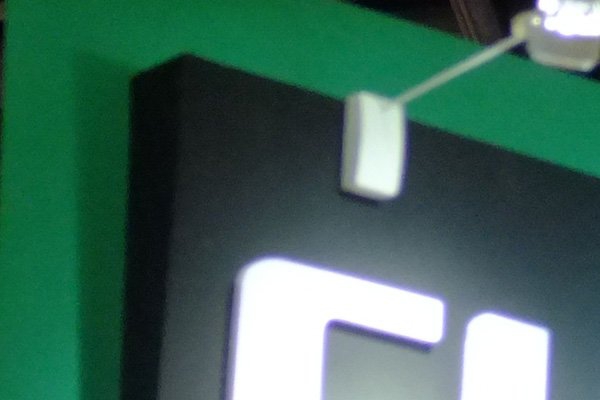
ISO 1600 - Click on image for larger crop 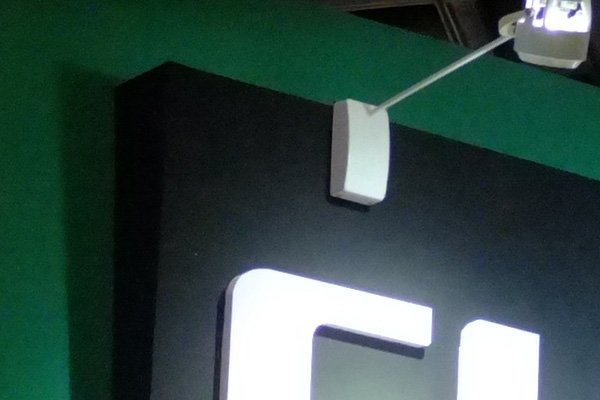
ISO 3200 - Click on image for larger crop 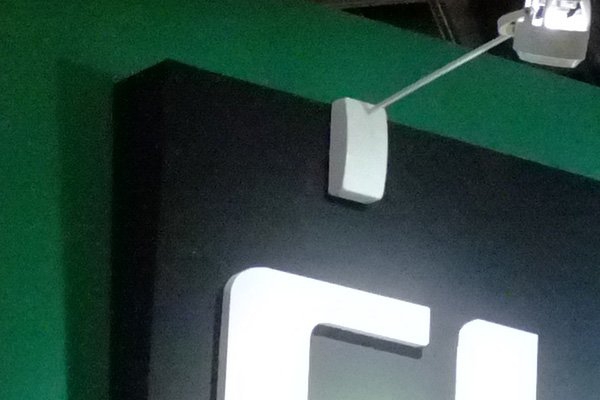
ISO 6400 - Click on image for larger crop Image Quality ImpressionsEven with a handful of samples, the camera shows great promise. Noise appears well controlled till ISO 800, and ISO 3200 is not too bad. Noise at ISO 6400 is showing a "dithering" noise structure quite clearly though. Not totally unusable, and for less critical applications they are certainly usable. Resolution looks good, though again, I do caution on making a judgement based on a few samples. The same can be said for dynamic range and tonal range. Colours appear a bit too strong in the JPEGs at the default setting. One thing that did come up is the purple fringing in JPEGs. Surprising to see something like that in 2011. The RAW files I have were converted using an experimental build of DCRaw, but I felt it still had some way to go. That said, the smoothness and detail present in the RAWs hint at greater things to come. One thing that was clear was that the RAWs have far less purple fringing than the JPEGs. I suspect that most owners will stick with shooting RAW, pending any unforeseen hiccups. Overall ImpressionsThe Fujifilm Finepix X100 is a very promising camera, spoilt by a few interface decisions, but ultimately I believe it will not mar the camera in the eyes of most people. The consideration I feel rests solely on the price (it is not a cheap camera) and if one is willing to have a camera dedicated to one focal length (in this case, 35mm equivalent). Personally, 35mm is not a favourite focal length of mine, so I will be passing this on. A 28mm or 45/50mm version however would seriously tempt me. You hear that Fujifilm? Feel free to leave your own thoughts on the Fujifilm X100 in the comments! Lee Yuan Sheng has used plenty of old film cameras since he started messing about with his dad's cameras in the 1980s. There is something to be said about knobs and dials, but there is also something to be said (less favourably) about film not spooling, jammed film advance levers, and having ISO 400 as the top usable film speed. He is happy to use a modern interface as long as it is fast and easy.
__________________
Baka. Soku. Zan. - The justice behind the dysORDer.
|